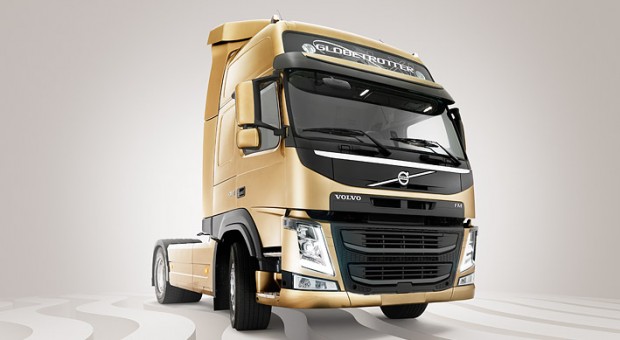
Volvo Trucks – Building an ultra-modern Volvo FH in five days
The new Volvo FH has been dubbed the “next-generation truck”. Jonas Nordqvist, product feature and profitability manager in the strategic planning department at Volvo Trucks, talks about what this actually means.
Work on the development of a modern truck starts long before production is even relevant. The hunt for the highest possible quality characterises every aspect of the process from start to finish. Careful analysis of customers, society and the competition indicates which demands a new truck model will have to meet. The market is also scanned to identify which technological innovations can be integrated into the new product. This data then forms the basis for a detailed requirement specification that governs how a modern truck should be built.
Once the requirement specification has been set, it is time for the next challenge: to transform ideas into reality. In order to succeed here it is necessary to implement a cross-functional working method where everyone, from design through construction to production – works together from day one.
The fact that series production of the new Volvo FH is in full swing, and the fact that the first trucks are now on their way to their customers, therefore marks not just the start of something new. It also marks the end of a long development journey. For the European Volvo plants in Sweden, Russia and Belgium the focus was on developing the new product in cooperation with the engineers. In parallel they also produced the documentation for everything that needs to be updated in the plants, as regards both new tooling and new skills.
An ultra-modern truck requires ultra-modern production tools. One important investment here is in the new presses, which are used in the production of all the cab parts.
Another major investment was the purchase of 56 new robots, all of which help improvement production efficiency. Automation also guarantees that each and every truck offers the same high level of quality. One example of this is that all the glass in the truck is now bonded into place. There are two benefits to this: the cab is safer since the windows form part of the cab’s structure, and the production process is more efficient and quality-assured than before.
Another important role for the plants was to participate in the development of the new truck. In order to do this without disrupting ongoing production, pilot plants were established in Volvo’s two Swedish factories in Tuve and Umeå. These can be described as miniature replicas of the production plants’ full-scale assembly operations. There the new tools could be tested and method trucks could be built. The aim there was largely to transform theory into practice, to determine the best assembly process and to find out whether it was even possible to build the truck in the sequence and with the tools that the engineers had in mind.
The pilot plants also served as a basis for enhancing the competence of the assembly personnel at both local and global level. Over the past few years, key operators from all over the world have worked side by side with truck builders in the pilot plants to learn how the new truck is to be put together. When the time came to move the assembly process to the regular production line in the Swedish plants, the key operators were able to teach their colleagues what to do. The benefits will be the same globally.
The pilot plants also served as an important arena for the development of simpler and more ergonomic routines for the employees. Although the product itself is more complicated, simplifications and smart assembly solutions have made it easier to build the new truck. One example is the chassis, which is now built upside-down to make it easier to access all the various components.

















